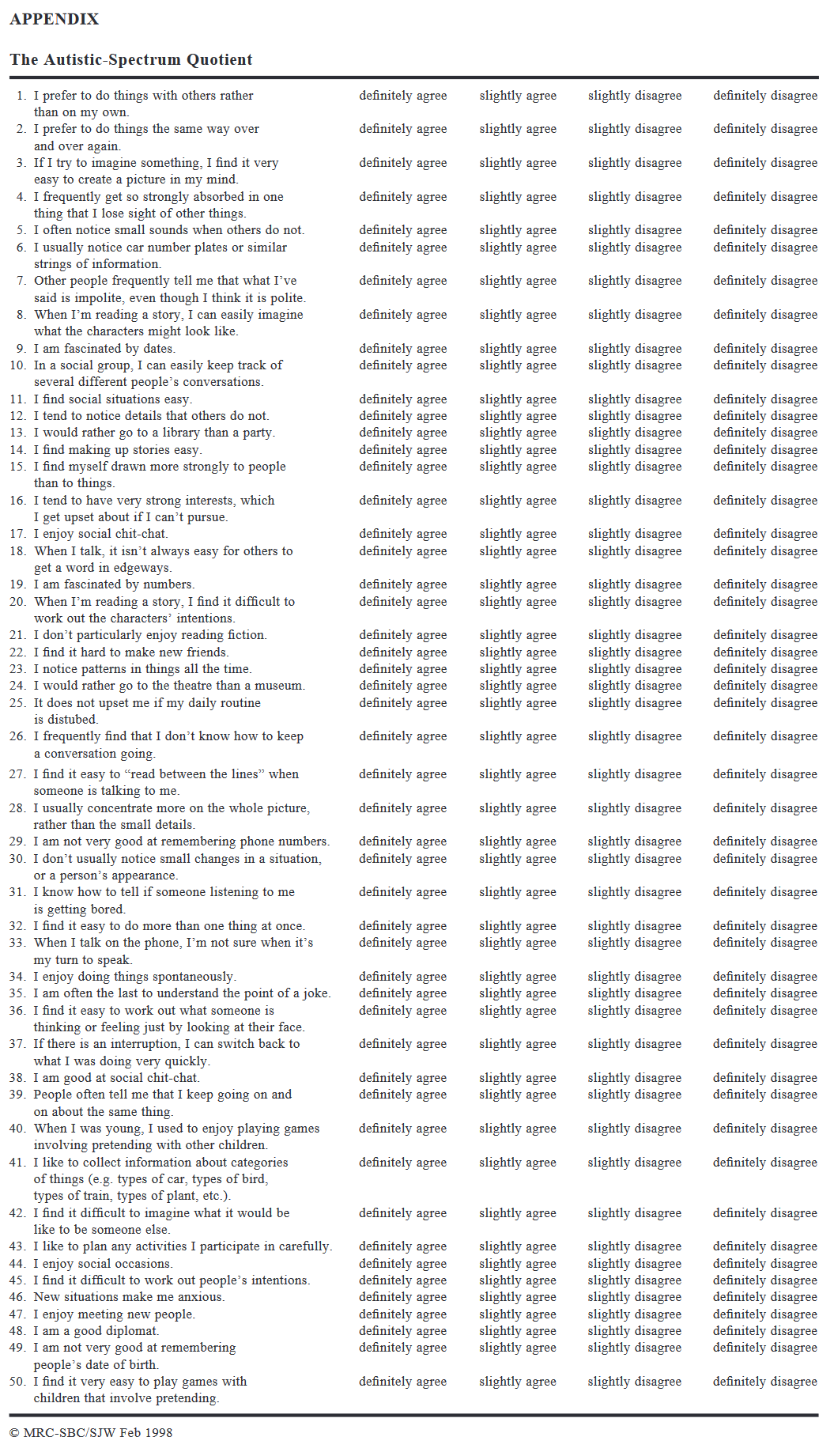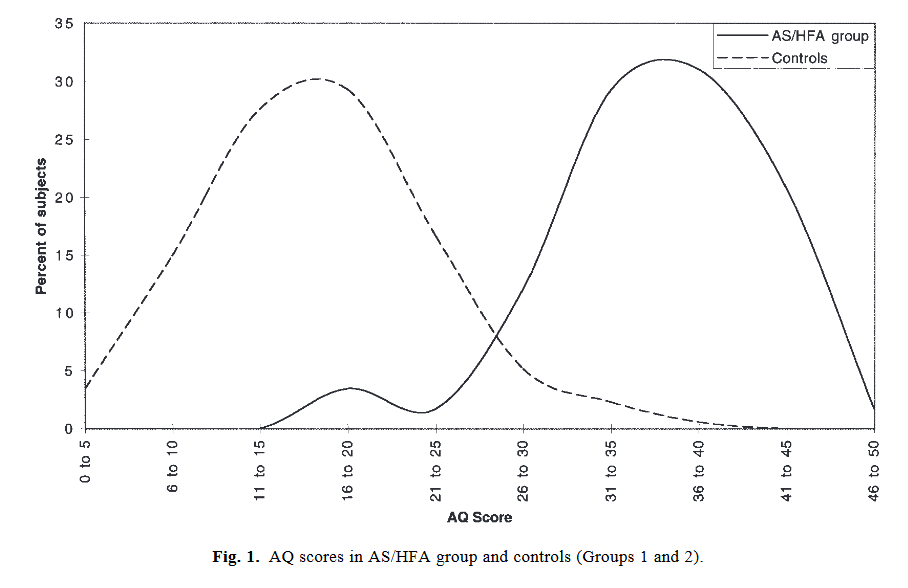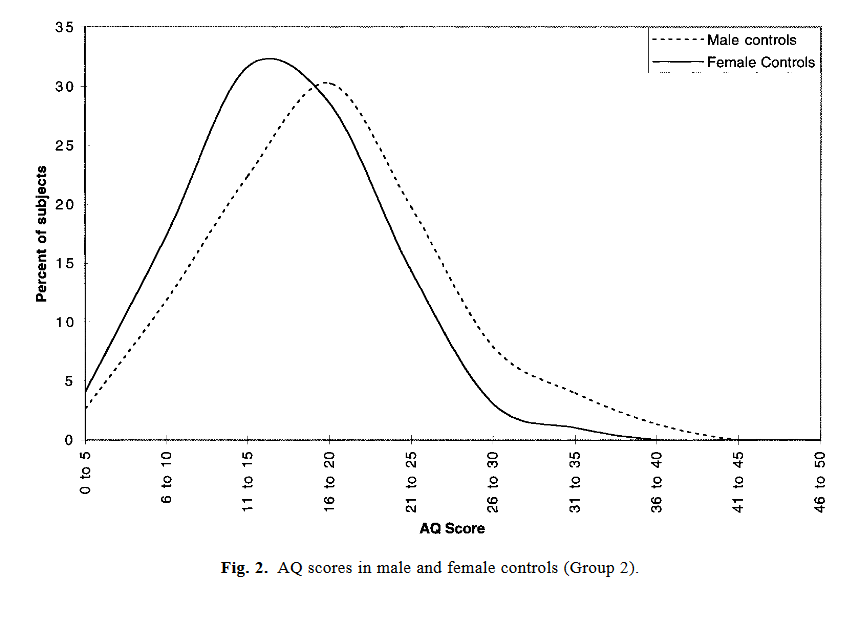一个自闭症谱系的自测量表 & 自测计分小程序
本测试仅供参考,不作为诊断依据。
事情要从几周前说起。4月2日是世界自闭症日,那天药明康德旗下的学术经纬公众号发了一篇文章《理工科父母的后代更容易患自闭症?若有这5个特点,就要小心了》。这篇文章对自闭症谱系的特点、人群流行情况等进行了科普,归纳了自闭症的5个主要特征(社交互动障碍,缺乏共情能力;沟通有障碍;兴趣或活动范围狭窄,注意力的转换能力差/注意力过于集中; 重复的刻板行为、对细节过度关注;想象力障碍(但高功能患者会表现出一些像是具备想象力的表现)。在文章的末尾,他们还贴心的附上了一份自闭症谱系障碍的检测问卷。
确实是份挺有意思的小测试。于是我去找了一下他们这个测评量表的原版。药明康德的编辑够靠谱,在公众号文章的末尾把参考文献贴出来了。他们这个量表来自 The Autism-Spectrum Quotient (AQ): Evidence from Asperger Syndrome/High-Functioning Autism, Males and Females, Scientists and Mathematicians 这篇文章,是剑桥大学实验心理学和精神病学系的团队发表的一个检测量表。
量表的英文原版如下图所示:

中文翻译版如下(来自药明康德公众号)
1 | 1 和独自做事相比,我还是更喜欢和别人一起做事。 |
量表总共50道题,分为5个维度,分别用来衡量社交(social skill)、注意力转换(attention switching)、对细节的关注(attention to detail)、沟通(communication)、想象力(imagination)这几个方面的障碍。题目分布如下表所示:
| Aspect | Items |
|---|---|
| social skill | 1,11,13,15,22,36,44,45,47,48 |
| attention switching | 2,4,10,16,25,32,34,37,43,46 |
| attention to detail | 5,6,9,12,19,23,28,29,30,49 |
| communication | 7,17,18,26,27,31,33,35,38,39 |
| imagination | 3,8,14,20,21,24,40,41,42,50 |
所有题目都是同样的四个选项,包括完全同意(definitely agree)、有点同意(slightly agree)、有点不同意(slightly disagree)、完全不同意(definitely disagree)。不同的题目中,这些选项的分值各有不同:
- 在下面这些题目中,选择完全同意(definitely agree)或有点同意(slightly agree)得一分,否则不计分: 1, 2, 4, 5, 6, 7, 9, 12, 13, 16, 18, 19, 20, 21, 22, 23, 26, 33, 35, 39, 41, 42, 43, 45, 46.
- 在下面这些题目中,选择有点不同意(slightly disagree)或完全不同意(definitely disagree)得一分,否则不计分:3, 8, 10, 11, 14, 15, 17, 24, 25, 27, 28, 29, 30, 31, 32, 34, 36, 37, 38, 40, 44, 47, 48, 49, 50
最终汇总一下分值,即为总体得分(AQ score)。
这个量表的研究团队对正常人群和自闭症患者做了调查,最终的结果如下图所示。正常人群的AQ score均值大约在15附近,而高功能自闭症(AS/HFA)患者的AQ score均值达到了35左右。两性之间的AQ score没有显著差异,不过从统计图中可以看出女性的AQ score平均值是要略微低于男性一点的(这倒也很符合生活中的一些印象,例如女生更团结互助、善解人意等等)。


看来药明康德的调查问卷确实是有研究基础的。
感觉这个测试其实还挺有意思,但是药明康德的那个量表没法实时输出统计结果,需要等上几天。所以,写了个python小程序,可以自己随时随地测着玩:
1 | pos_items = [1, 2, 4, 5, 6, 7, 9, 12, 13, 16, 18, 19, 20, 21, 22, 23, 26, 33, 35, 39, 41, 42, 43, 45, 46] |
上面这段代码包含了答题和计分的所有环节。运行之后,答题界面大致如下(这下面的回答都是我随便打的):
1 | This is the scoring program of Autism-Spectrum Quotient(AQ) papersheet. |
然后是计分界面:
1 | Item YourAns Aspect Score |
最终的统计分数界面:
1 | Final result: |
如果最终的得分超过32分,则很大概率存在一定的自闭症倾向。80%患阿斯伯格综合征或高功能自闭症的成年人得分≥32分;而对照组的成年人中,只有2%的人得分≥32分。(不过,许多得分超过32分、符合轻度自闭症或阿斯伯格综合征诊断标准的人表示,他们在日常生活中没有遇到困难。)
你也来测一测!说不定能发现点自己的隐藏天赋呢(手动狗头)